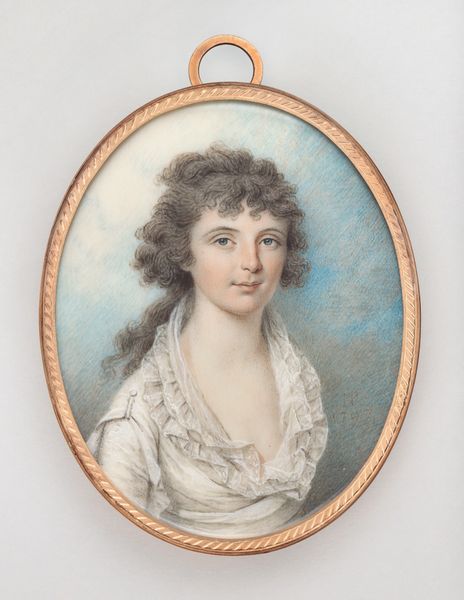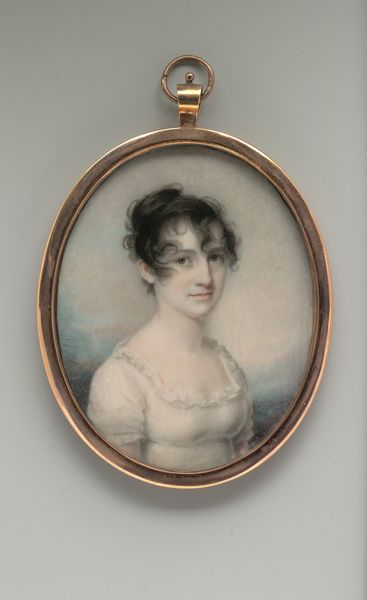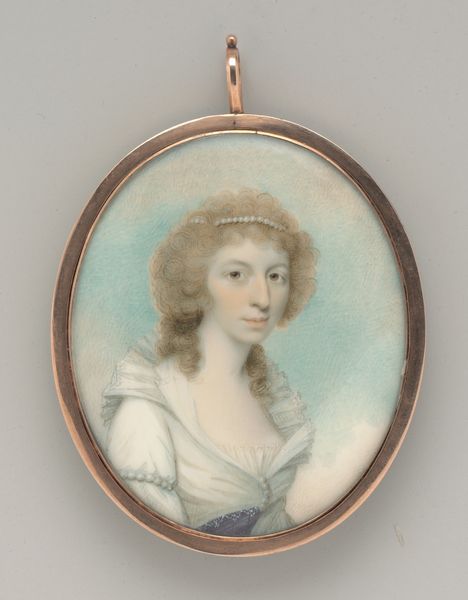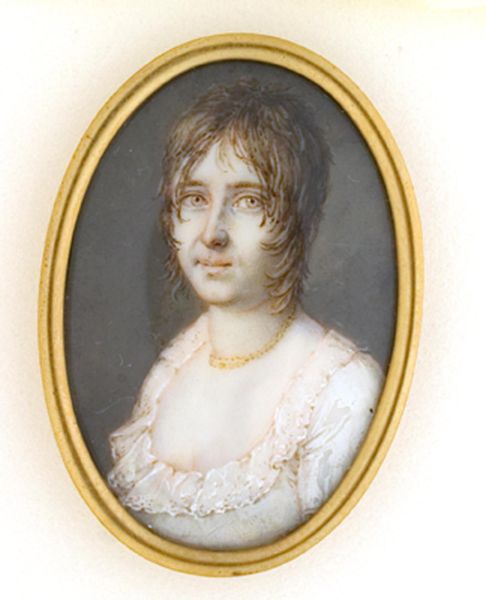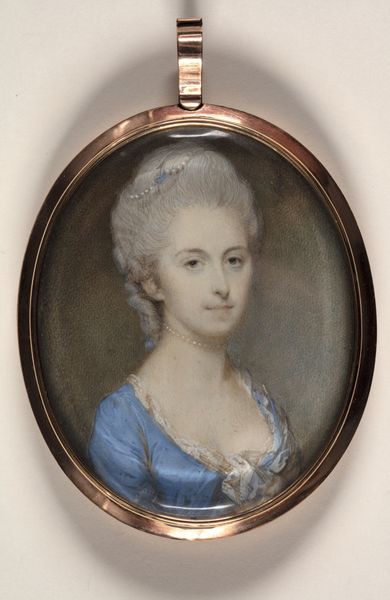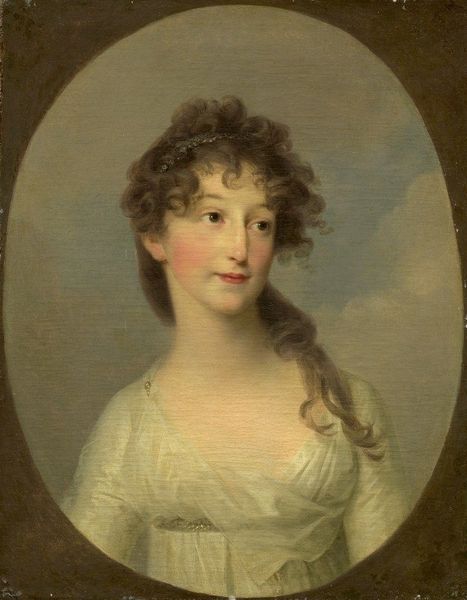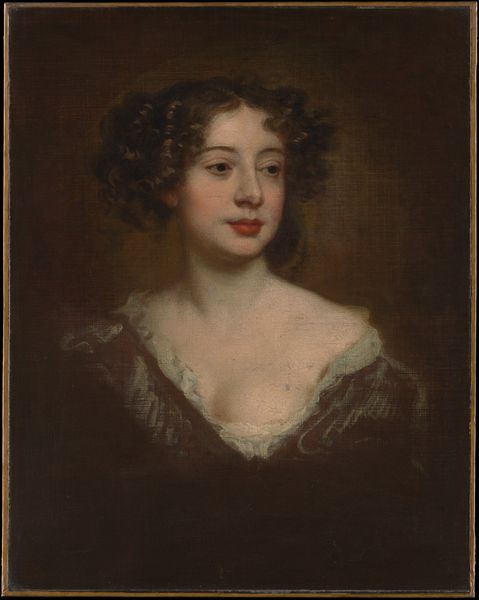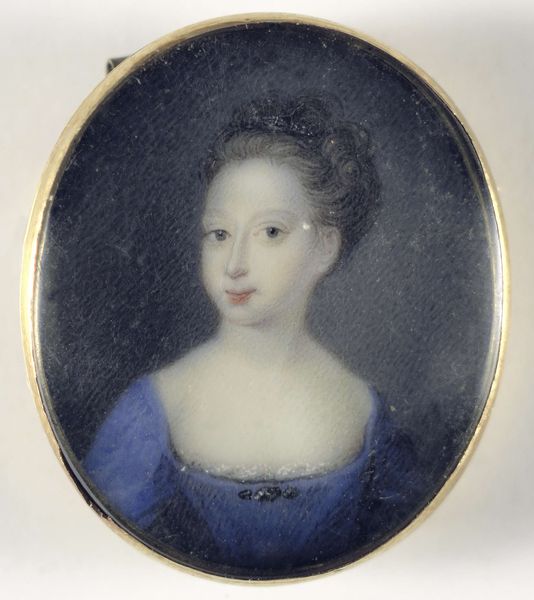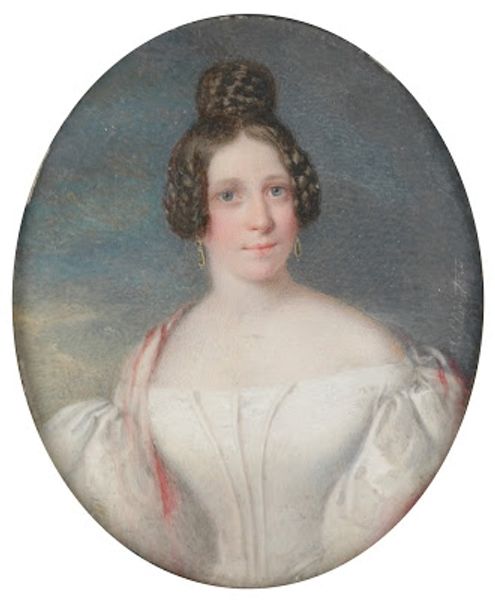
painting, watercolor
#
portrait
#
painting
#
figuration
#
watercolor
#
intimism
#
romanticism
#
miniature
#
watercolor
Dimensions: 3 5/8 x 2 7/8 in. (9.2 x 7.3 cm)
Copyright: Public Domain
Editor: We’re looking at Adolph Ulrich Wertmuller’s "Portrait of a Lady" from 1805, a miniature watercolor painting. It has such a gentle, almost dreamy quality to it. How do you interpret this work within its historical context? Curator: Well, miniatures like this one were hugely popular as personal keepsakes, but they also served a key social function. These were luxury objects circulating within elite social networks. Did you notice how the frame is an integral part of the work, ready to be worn? Editor: Yes, it's quite ornate and beautiful! Like a wearable status symbol? Curator: Precisely. Think of it as a piece of mobile propaganda, projecting a certain image and level of wealth, but more intimately than, say, a large-scale oil portrait. Also consider the woman’s dress: the Empire silhouette became fashionable in this period, coinciding with shifting ideals of femininity. Is she portrayed here as a politically neutral object of desire or does the overall image convey empowerment? Editor: I see what you mean. The dress and soft color palette suggest innocence, but her direct gaze and confident posture complicate that. Was there tension between these conventional images of women and new social realities? Curator: Absolutely. Romanticism valued emotion and individuality. And miniature portraits become ways of signalling those sentiments, for their owners and to those within their immediate circles. What's the message do you think *she* wanted to give off to viewers? Editor: This piece has definitely opened my eyes to the power of art as a historical and social object. Curator: Agreed, these objects offer complex insights into social values and shifting political landscapes.
Comments
No comments
Be the first to comment and join the conversation on the ultimate creative platform.
